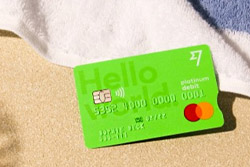
The PPF licence is a banking licence designed specifically for e-money or stored-value providers without the traditional activities associated with banking, such as lending or interest-bearing deposits.
With the licence, TransferWise Australia has signalled it will be able to get direct access to payments infrastructure such as the New Payments Platform (NPP) instead of depending on third parties.
Direct access to the NPP is still restricted to those with a banking licence despite repeated calls from TransferWise and various bodies like the Productivity Commission and the RBA. TransferWise has argued the eased restriction would democratise access to fintechs without the additional burden of becoming an ADI (authorised deposit-taking institution).
The PPF licence will also allow the firm to become a direct issuer of Australian BSB and account numbers for its multi-currency account product and enable it to expand its product suite.
TransferWise Australia country manager Tim Cameron reported the company will work with regulators and policy makers to share best practice guidance on payments systems from overseas markets.
"The steps we have taken today which include taking on the additional regulatory requirements, is driven by our commitment to Australia, our mission, and to setting a new global standard to give millions access to truly competitive services, even if regulations have not kept up with the new breed of services fintechs provide,” Mr Cameron said.
“By becoming independent and cutting out the middleman, we’ll be able to save our customers even more money and time in the process.”
The company has gained similar access to the UK equivalent of the NPP, the FPS, reporting it was the non-bank to do so and to hold a settlement account with the Bank of England. As a result, TransferWise reported it can make transfers into and out of the UK instant (under 20 seconds) and lower its price by almost 30 per cent.
Two month ago, it also directly integrated with the Hungarian Central Bank, gaining direct access to the local instant payment system and the ability to issue Hungarian bank account details to its multi-currency account product.





